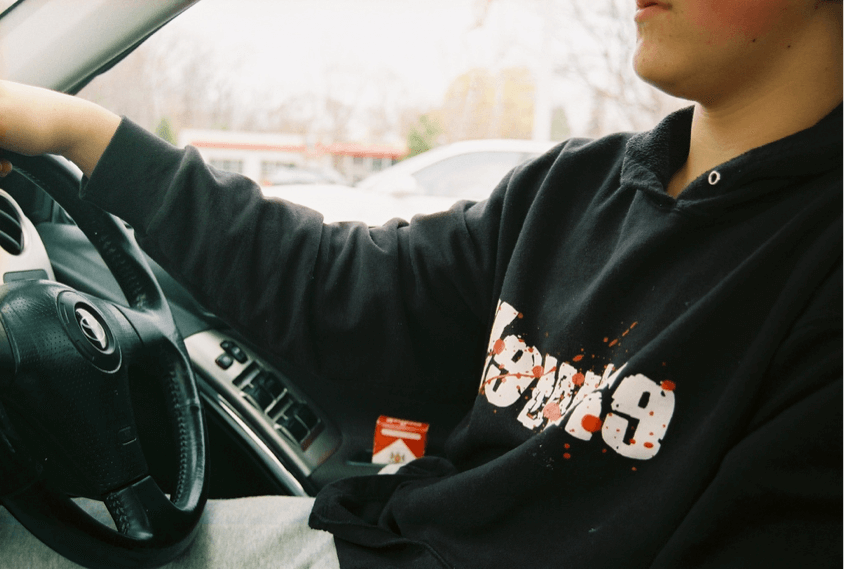 It’s that time of year again. Backpacks are pulled from a dusty corner in the closet. Calculators have emerged from a three-month sabbatical in the back of your teen’s desk drawer. Yet another stack of notebooks is purchased. The thought of new textbooks and knowledge may fill your teen with excitement—or dread. Whatever emotions your teen might be experiencing, there’s one thing that back-to-school time always brings: driving hazards.
It’s that time of year again. Backpacks are pulled from a dusty corner in the closet. Calculators have emerged from a three-month sabbatical in the back of your teen’s desk drawer. Yet another stack of notebooks is purchased. The thought of new textbooks and knowledge may fill your teen with excitement—or dread. Whatever emotions your teen might be experiencing, there’s one thing that back-to-school time always brings: driving hazards.
Mix together roadways clogged with school buses, inexperienced drivers, frantic parents, walkers, and bikers, and you’ve got a recipe for an accident. At the Law Office of Dianne L. Sawaya LLC, our attorneys work with families who have been devastated by the effects of car accidents. Your safety on the road is extremely important to us, which is why we’ve created a three-part back-to-school driving guide for you and your teen driver.
If you have any questions about driving safety or our car accident attorney services, contact our Denver, Colorado office at any time.
Is Your Teen a Safe Driver?
Small habits can mean the difference between a sideswipe and a safely avoided collision. That’s why it’s so important for your teen to develop safe driving habits. This can only occur if they make a conscious effort to practice safe driving techniques every time they get behind the wheel.
Good habits require repetition, so go over this checklist with your teen each time you’re in the car together. Identify what areas need improvement, but remember to praise your teen driver for what they’re doing well so the safe habits stick.
| Does your teen do these things behind the wheel? | ||
| When starting the car, does your teen: | ||
| 1. Put on their seatbelt and make sure others are buckled? | Yes | No |
| 2. Make sure the mirrors and seat are properly adjusted? | Yes | No |
| 3. Know where all the controls are located? | Yes | No |
| When backing up the vehicle, does your teen: | ||
| 1. Check their mirrors? | Yes | No |
| 2. Look over both shoulders? | Yes | No |
| When moving the vehicle forward, does your teen: | ||
| 1. Turn on their signal? | Yes | No |
| 2. Check their mirrors and look over their shoulder before pulling into traffic? | Yes | No |
| 3. Use both hands on opposite sides of the steering wheel? | Yes | No |
| When changing lanes, does your teen: | ||
| 1. Signal and check their mirrors? | Yes | No |
| 2. Check their blind spot? | Yes | No |
| 3. Change lanes safely? | Yes | No |
| 4. Maintain their speed? | Yes | No |
| When stopping, does your teen: | ||
| 1. Check traffic all around? | Yes | No |
| 2. Stop behind crosswalks and limit lines? | Yes | No |
| 3. Stop without keeping their foot on the gas? | Yes | No |
| When driving on the highway, does your teen: | ||
| 1. Check the traffic flow? | Yes | No |
| 2. Time their entry onto the highway? | Yes | No |
| 3. Check their mirrors and over their shoulder before merging? | Yes | No |
| 4. Signal early and slow down on the exit ramp? | Yes | No |
| 5. Adjust their speed to the current road conditions? | Yes | No |
| When turning, does your teen: | ||
| 1. Slow down? | Yes | No |
| 2. Yield right of way when necessary? | Yes | No |
| 3. Begin and end turns in the correct lane? | Yes | No |
| 4. Accept legal right of way when safe? | Yes | No |
| 5. See and react appropriately to hazards? | Yes | No |
| When it comes to defensive driving, does your teen: | ||
| 1. Look far up ahead and all around? | Yes | No |
| 2. Check their mirrors before braking? | Yes | No |
| 3. Maintain a safe following distance? | Yes | No |
| 4. Check cross streets before passing? | Yes | No |
| 5. Check for signal lights and hand signs? | Yes | No |
| 6. Keep a “space cushion” around the car? | Yes | No |
There’s a lot for your teen to remember when they’re first learning to drive, so it’s unlikely that they’ll perform every safe driving tip on this list every time. With repeated gentle reminders and practice, your teen will start to make these habits consistent. Remember, your teen is less likely to develop safe driving habits if you do not set a good example.
The Basics: Gaining Driving Experience
There’s no such thing as a perfect driver. Making mistakes is common, especially in your teen’s first few years of driving. This makes them more prone to accidents, but that’s why it’s critical to make sure your teen driver is prepared to encounter new situations on the road. Here are a few tips to go over with your teen:
- Make sure your teen knows the basics of maintaining a car, including pumping gas, changing a tire, jump-starting the car, and adding windshield washer fluid.
- Create a policy where your teen will let you know where they’re going and when they’ll be back every time they take the car.
- Don’t allow your teen to make a quick phone call or use their phone while driving.
- Make sure your teen can handle small trips to school or work during daylight hours before allowing them to drive at night. Before your teen starts having other teens in the car, practice driving with a responsible adult.
- Try to limit the number of passengers your teen drives around in their first year on the road, as they can be an added distraction and increase your teen’s crash risk.
Essentially, safe driving is all about awareness—your awareness of where your teen is going and your teen’s awareness of what’s happening around them on the road. At The Law Office of Dianne L. Sawaya LLC, we sincerely hope these tips will help you help your teen to be a safer driver.
For more information on keeping your teen safe on the road, visit teendriving.com. Check back soon for the second feature in our three-part Back to School Safe Driving guide, distracted driving.

